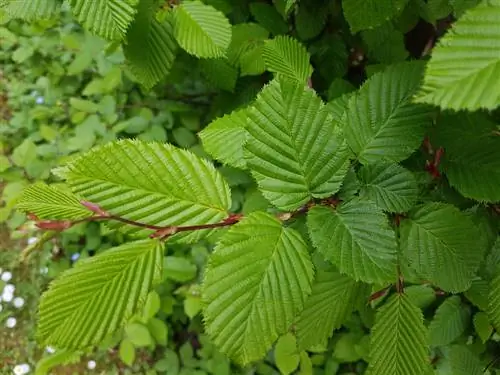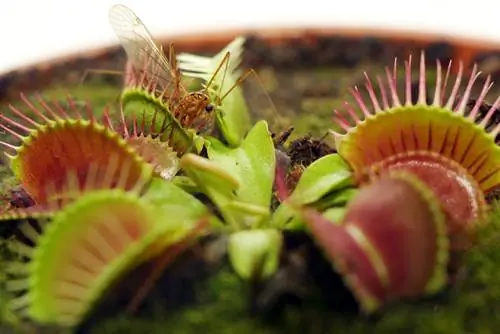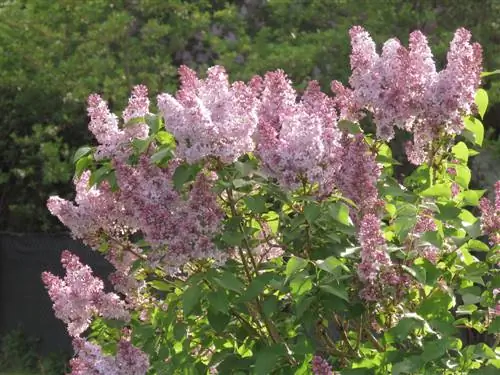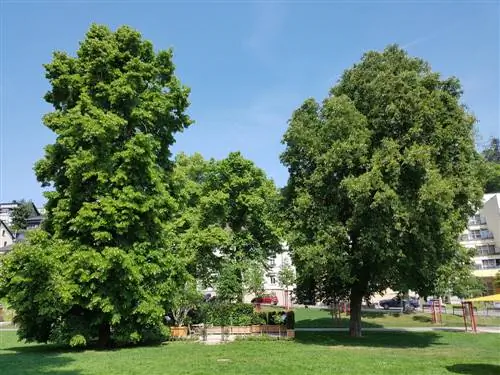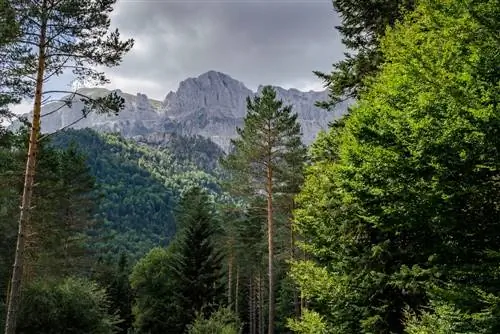- Author admin [email protected].
- Public 2023-12-16 16:46.
- Last modified 2025-01-23 11:21.
Woods characterize the garden and give it its very own character. Large, representative deciduous trees give structure to a large garden and provide a shady spot - which can not only be used for your own seating area, but also creates the right climate for many perennials and shrubs such as rhododendrons, dogwoods, Japanese maples or magnolias.
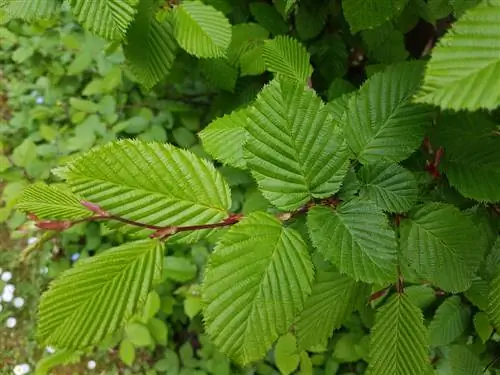
Which representative deciduous tree species are suitable for large gardens?
Representative deciduous tree species for large gardens include field maple, Japanese maple, red-flowering horse chestnut, purple alder, black birch, hornbeam, quince, red beech, walnut, black locust and winter lime. These trees offer interesting growth forms, leaf and flower colors and contribute to the garden structure.
The most beautiful deciduous tree species for large gardens
Before you put a large deciduous tree in your garden, you should first check the space you actually have. Large trees need a lot of space in which they can develop their characteristic shape. So choose a tree that is appropriate for the space available and, above all, make sure to maintain the required distances from the property line. Special growth forms such as globe maple, silver birch, weeping elm or corkscrew willow require a place in the garden so that their striking shape can be shown to its best advantage.
Overview: Suitable large deciduous tree species for the garden
Here you will find the most beautiful representative deciduous tree species for your home garden. This also includes special varieties that have a special growth habit or an interesting leaf or flower color.
Field maple (Acer campestre)
This native deciduous tree grows up to 15 meters high and develops a densely branched crown up to 10 meters wide. The typical three to five-lobed leaves turn bright golden yellow in autumn. The field maple is usually planted as a single, group or avenue tree, but is also very suitable for hedge planting. The variety 'Carnival' is interesting with its white and creamy yellow variegated leaves.
Fan maple (Acer palmarum)
The richly branched, mostly multi-stemmed Japanese maple comes from East Asia and is enjoying growing popularity here. With age, the shrub or tree can reach heights of between eight and ten meters and develops a picturesque, umbrella-shaped crown. Depending on the species, the delicate leaves are fresh green, intense yellow, red or variegated.
Red-flowering horse chestnut (Aesculus x carnea 'Briotii')
This type of chestnut develops into a 10 to 15 meter tall tree with a compact, densely leafy crown. The hand-shaped ones. Five to seven-part leaves can be up to 25 centimeters long and turn bright yellow in autumn. The real attraction, however, are the blood-red flowers with yellow spots at the base, which produce plenty of nectar and are therefore good pasture for bees.
Purple alder (Alnus x spaethii)
This type of alder grows between 10 and 15 meters high and develops a regular, broadly conical crown. The narrowly elliptical leaves, which are between six and 18 centimeters long, are brownish purple to dark purple when they shoot, dark green in summer and purple-red during the late autumn color.
Black birch (Betula nigra)
The 12 to 15 meter high, often multi-stemmed tree has a very striking bark color: On young trees, the bark is reddish to yellow-brown and often very tightly rolled up. As it ages, the bark turns darker in color until the bark is roughly torn, hard and black. The copper or Chinese birch (Betula albosinensis) also offers a unique bark color.
Common hornbeam (Carpinus betulus)
The native hornbeam is a single or multi-stemmed tree up to 25 meters high with a sprawling crown. The popular park, avenue and street tree is also ideal as a hedge plant or for creating cozy beech aisles or portals.
Quince (Cydonia oblonga)
The quince is a very old cultivated plant that is not only cultivated because of its tasty fruits. It slowly grows into a broad-crowned tree up to six meters high. The tree blooms with white or delicate pink flowers in May, the aromatic, fragrant apple or pear-shaped fruits ripen between September and October.
Common beech (Fagus sylvatica)
The native red beech is an impressive forest tree up to 30 meters high with a silver-gray trunk and a broadly arched crown. The species and its varieties are particularly suitable for solitary planting and for tall cut hedges. Particularly interesting are varieties such as 'Purpurea Pendula' (glossy black-red leaves, hanging branches and twigs), 'Purple Fountain' (dark, reddish-brown leaves, loosely hanging branches and twigs) or 'Dawyck Purple' (columnar tree with dark, purple-brown leaves)..
Walnut (Juglans regia)
The stately tree can reach 20 to 30 meters high and develops a very sprawling crown. It has long been a popular specimen tree for larger yards, gardens or parks. The tasty nuts can be harvested in large numbers in autumn.
Robinia (Robinia pseudoacacia)
This solitary tree, which grows up to 25 meters high and has a loose crown that is up to 18 meters wide, is one of the beekeeping plants richest in nectar and sugar. Particularly interesting varieties are, for example, the corkscrew locust ('Tortuosa', bizarrely twisted, often hanging branches and twigs) or the ball locust ('Umbraculifera', initially spherical, with an umbrella-shaped crown as it ages).
Winter lime tree (Tilia cordata)
The native winter linden tree is a well-known large tree that can grow up to 40 meters high with its arched crown. The species can be planted as a solitary tree or as an avenue tree, but is also suitable for a hedge planting or for a high tree wall that protects from light and wind. The nectar-rich flowers are an important pasture for bees.
Tip
Of course, the trees mentioned cannot cover the complete spectrum of representative deciduous tree species. It is also worth choosing an impressive variety among the strong-growing fruit trees.

